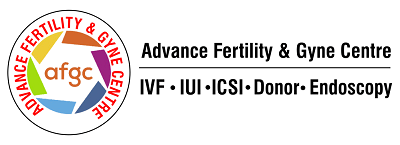What Is IVF and How Does It Work?
IVF, or in-vitro fertilization, is a fertility treatment where eggs and sperm are combined outside the body to create embryos. It’s often used when other treatments have failed or when conditions like blocked tubes, endometriosis, or male factor infertility are present.
The process includes:
- 1. Ovarian stimulation with hormone injections to produce multiple eggs.
- 2. Egg retrieval, done under light anesthesia.
- 3. Fertilization in the lab, followed by embryo culture.
- 4. Embryo transfer—one or more embryos are placed into the uterus.
After this, patients enter the “two-week wait”, a time of anticipation before the pregnancy test.
When to Expect Results After IVF
The official result is determined about 14 days after embryo transfer with a blood test that measures the pregnancy hormone beta hCG.
This two-week period can be emotionally intense. Patients often feel caught between hope and uncertainty. It’s crucial during this time to:
- Take all prescribed medications (especially progesterone) without missing doses.
- Avoid unnecessary stress—don’t overanalyze every symptom.
- Wait for the scheduled test instead of testing too early at home, which may give false results.
Emotional and Physical Signs to Watch For
During the wait, you may experience various symptoms—many of which are normal and not necessarily predictive of the outcome.
Common physical signs include:
- Spotting or light bleeding: This can happen and may be linked to implantation. It’s usually not a cause for alarm.
- Mild cramping or bloating: Often related to hormonal medications or embryo implantation.
- Fatigue or breast tenderness: These can also result from progesterone.
It’s important to remember that having no symptoms at all is also normal. Everyone responds differently, and symptoms (or lack of them) do not indicate success or failure.
Rest and Activity: What’s Really Needed?
Many people believe bed rest after embryo transfer improves success rates. However, studies do not support this. In fact, too much inactivity may increase stress and reduce circulation.
We do not recommend strict bed rest. Instead:
- Stay gently active—short walks and light movement are encouraged.
- Avoid intense workouts or heavy lifting, but continue with routine activities.
- Focus on relaxation, not immobilization.
Taking care of your mental and physical health without overexertion is the best approach.
Common Causes of IVF Failure
IVF failure can result from a variety of factors affecting egg quality, sperm health, embryo development, uterine environment, and lab practices:
- Poor egg quality: Aging eggs often show chromosomal abnormalities or oxidative damage, reducing embryo viability.
- Sperm issues: Low sperm count, poor motility, or DNA damage can impair fertilization and embryo formation .
- Implantation failures: Embryos may fail to implant due to uterine factors—like thin endometrium, fibroids, or polyps—or embryo abnormalities .
- Uterine abnormalities: Conditions like fibroids, scarring, or hydrosalpinx can affect implantation and decrease success rate.
- Hormonal imbalances: Issues like elevated FSH, untreated thyroid disorders, or PCOS can impair both egg production and uterine receptivity.
- Laboratory factors & techniques: Suboptimal embryo culture conditions, embryo grading errors, or errors during egg retrieval/transfer can lead to cycle failure.
- Lifestyle and health factors: High BMI, smoking, excessive alcohol, stress, or unmanaged infections may negatively affect outcome.

What to Do After an IVF Failure
Experiencing an IVF failure can be emotionally devastating. It’s natural to feel disheartened after investing so much physically, financially, and emotionally. But this is exactly the time to stay connected with your fertility team. It’s important to remember that even when everything seems perfect, a 100% implantation rate is biologically impossible. IVF success often requires more than one attempt, with small adjustments or protocol changes along the way. Giving up after one failure means ending the journey before it truly begins. Mental preparedness for multiple cycles (if needed) is not just realistic, but often essential for eventual success.
Here’s a step-by-step guide on what to do next:
- Analyze and pinpoint causes
Perform a detailed review: assess egg/sperm quality, embryo development, uterine health, hormone levels, and lab protocols. - Address anatomical or uterine issues
- If hydrosalpinx is present, consider salpingectomy or occlusion before the next attempt.
- Treat uterine abnormalities like fibroids or polyps through surgery (e.g., hysteroscopy) to enhance implantation prospects.
- Improve egg and sperm quality
- For low ovarian reserve or egg issues, mild stimulation, antioxidants, or adjuvant therapies can help.
- For male factor issues, interventions like sperm selection techniques (ICSI, IMSI) can improve fertilization .
- Enhance embryo quality and selection
- Utilize advanced culture methods like autologous endometrial co‑culture or blastocyst culture.
- Consider genetic screening (PGS/PGD) to identify viable embryos .
- Review lab environment and protocol
Ensure optimal lab conditions—stable temperature, pH, and gas balance—and meticulous transfer technique by experienced specialists. - Optimize lifestyle and medical health
- Encourage healthy BMI, cessation of smoking/alcohol, and stress management.
- Screen and treat any hormonal or immune conditions (thyroid, thrombophilia) .
- Consider adjuvant therapies
Based on individual needs, options like IVIG, uterine relaxants, laser-assisted hatching, or endometrial receptivity testing (ERA) may help. - Seek tailored medical advice
Work closely with a fertility specialist to develop a customized protocol, avoiding unnecessary or unproven interventions .
How to Improve IVF Success Rates
To maximize your chances in future IVF attempts, consider the following targeted strategies:
Tailored Stimulation Protocols
Rather than defaulting to high-dose regimes, choose personalized stimulation protocols based on ovarian reserve and age. Mild stimulation may improve both egg quality and endometrial response .
Optimize Embryo Selection & Culture
Advanced methods—such as blastocyst culture, autologous co-culture systems, and preimplantation genetic testing—can help select the healthiest embryos .
Uterine Preparation & Intervention
Correct structural issues via hysteroscopy or salpingectomy before transfer. Consider ERA to identify the best implantation window .
Refine Lab Techniques
Choose a clinic with proven laboratory standards. Details in embryo handling, incubator settings, and clinician skill can significantly impact outcomes .
Lifestyle and Medical Optimization
Maintain BMI within 22–27, stop smoking, limit alcohol and caffeine, and manage stress. Treat any underlying conditions early.
Integrate Adjuvant Therapies
Depending on the case, appropriate use of IVIG, immunotherapy, aspirin, or uterine relaxants may prove effective—always under medical supervision .
Key Takeaways
| Aspect | Recommendation |
| Identify causes | Review all factors: eggs, sperm, uterus, embryo, lab |
| Treat anatomically | Remove hydrosalpinx or fix uterine abnormalities |
| Personalize protocols | Tailored medication dosing to balance egg yield & quality |
| Enhance embryo selection | Use co-culture, blastocyst culture, PGT |
| Choose the right clinic | Ensure proven lab standards and technical skill |
| Optimize health | Achieve healthy BMI, reduce toxins, manage stress |
| Use adjuvants wisely | Only proven interventions, guided by specialists |
A failed IVF cycle can be deeply disappointing, but it’s also a powerful learning opportunity. With careful analysis, targeted improvements, and a personalized treatment plan, many couples go on to succeed in subsequent cycles.
About the Internet After an IVF Failure
After a failed IVF cycle, it’s natural to turn to the internet (seeking answers, advice, and hope). Retrospective thinking may lead to questioning every detail, and online sources can be both supportive and overwhelming. While some strategies we’ve discussed (like optimizing embryo quality, correcting uterine anomalies, and fine-tuning protocols, are supported by evidence) it’s important to be cautious about universally applying advanced add-ons such as comprehensive genetic testing of embryos (PGT-A) or endometrial receptivity arrays (ERA).
Recent analyses show that universal PGT-A without specific indications may not improve live birth rates, and in women of advanced maternal age, it might even reduce them due to embryonic mosaicism and biopsy risks. Similarly, data on ERA suggest no significant benefit in ongoing pregnancy or live birth rates when applied across the board .
Rather than investing heavily in expensive add-on technologies, many clinics find greater value in pursuing an extra IVF cycle, applying modest refinements, and focusing on proven strategies. This balanced, evidence-based mindset helps avoid unnecessary emotional and financial strain.

